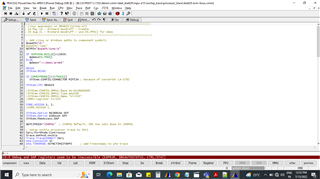Other Parts Discussed in Thread: DRA829,
Hi team,
I need to debug my ti-rtos based application running on mcu r5 core J721e_evm.
->lauterbach and trace32 V2.5.9.
->Pdk 7.03
->Lauterbach configurations scripts for different cores from official website
Rev 8.
when I connect the debugger from J16 of EVM and start trace32
as first time user I have tried Running the x_gel_to_cmm/dra829_allcoretypes_connect.cmm script
after that message is received as "target processor is in reset"
can you please help to configure this?
can you share the procedure to load source c" code on trace 32?
Regads,
Tanvi





